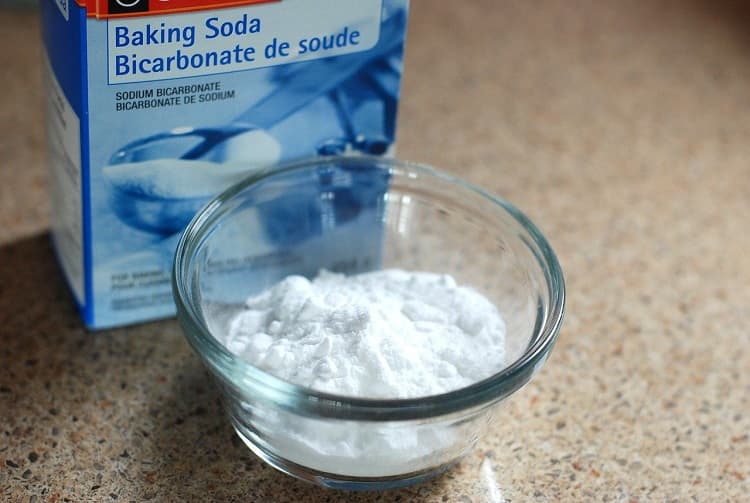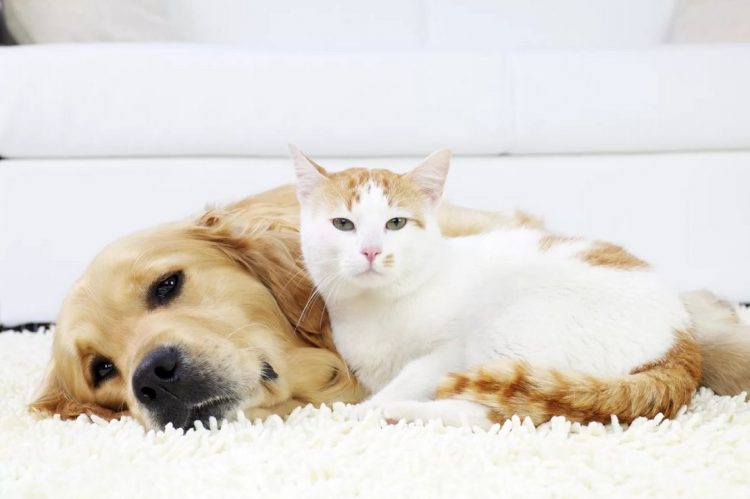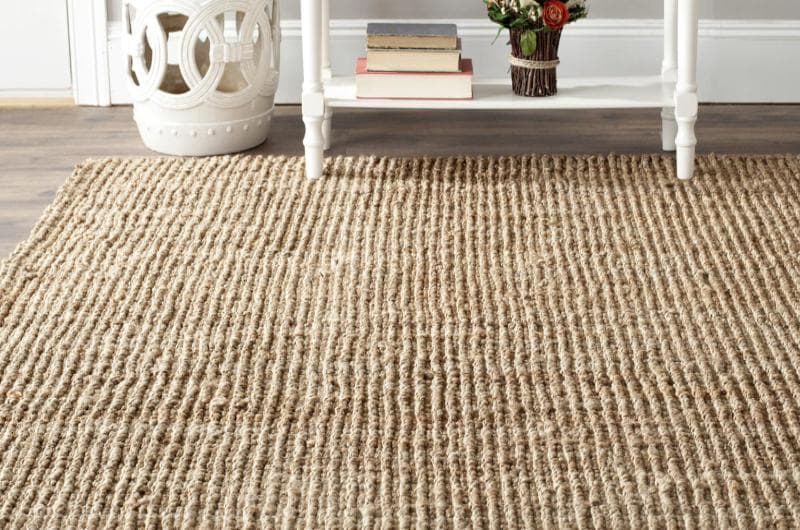Cleaning a sisal rug is not as difficult as it may sound.
While there are many methods of cleaning a sisal rug, this guide will focus on the steps needed to clean and maintain your sisal rug with minimal effort.
As you read through these instructions, you’ll notice that each step comes with a recommended product or tool for use in that step. These products have been chosen based on their effectiveness at removing common stains from rugs and ease of use for beginners.
Ditch the Water on your Sisal Rug to Clean it
If you have a sisal rug, the chances are good that it will get dirty and need to be cleaned at some point in time.
The best way to clean your sisal rug is by using the least amount of water possible while getting rid of dirt and debris from deep within the fibers.
Unless there has been an accident or spill on your floor covering, brushing should remove most surface dust and grime.
Skip the Scrubbing Sisal Rug
When it comes to cleaning a sisal rug, scrubbing is not the best way to clean it. Scrubbing will cause (fibers) and may also damage them over time as well as lead to premature wear on your floor covering.
If you have stubborn dirt stains or stained areas beyond brushing away with a regular brush, use an upholstery tool without bristles or attach old nylon pantyhose around the head of the tool before using it for easy removal of tough grime from deep within fibers. This process can be repeated if necessary but should only be done once every year or so.
Address Spills Immediately
When it comes to spills on a sisal rug, the faster you treat them, the better. If there is a fresh spill on your floor covering such as water or coffee, use absorbent rags and blot up as much of the liquid as possible without pushing it deeper into fibers. Freshly spilled liquids can lead to stains if not addressed immediately, so be sure to remove all traces, even that which may seem insignificant.
If stained beyond removal with just wiping away through brushing or using an upholstery tool, then pretreating by applying laundry stain remover will help remove stubborn spots from deep within fabric fibers more easily than regular cleaning products alone.
Dry Cleaning
Another option for cleaning a sisal rug is dry cleaning.
While this method of rugs care will usually cost you more than just keeping up with regular vacuuming and spot treatment, it may be the only way to clean certain types of stains properly. For example, pet urine or paint that has seeped deep into fibers due to prolonged contact.
If there has been an accident on your floor covering, then always opt for professional help when it comes to treating stubborn areas to maintain the integrity and look of the fabric over time, so use pretreatment methods before taking your rug to a cleaner can prolong its life.
Mild Soap and Vinegar for Sisal Rug Cleaning
A great all-natural way to clean a sisal rug is by using mild soap and vinegar.
- Fill an empty spray bottle with equal parts of the two ingredients (less if you want less scent) before spritzing onto the surface of your floor covering.
- Let sit for several minutes, then use a soft brush or upholstery tool to agitate fibers deep within the fabric in order to remove dirt and debris while avoiding harsh scrubbing that may cause damage over time.
- Once complete, rinse the area thoroughly with water until no suds remain on the surface before allowing it to air dry completely away from direct sunlight, which can fade color when left too long wet without proper drying methods.
Rinsing should be done after cleaning any type of rug to prevent soap residue from becoming embedded in fibers.
If you are looking for more ways on how to clean a sisal rug, then read through our complete guide here.
Baking Soda

Another method for cleaning a sisal rug is by using baking soda. If there has been an accident on your floor covering, then be sure to dry the area completely before applying any liquid onto fibers due to the risk of staining or color runoff from one type of fabric into another.
Once the surface and surrounding areas are properly dried (or vacuumed if wet enough), use a hand towel dampened with baking soda to remove stubborn spots without scrubbing deep within carpeting which could damage it over time.
Once again, once complete, let air dry away from direct sunlight and high heat such as near heating vents that can cause fading when left too long wet without proper drying methods taken into account afterward. Additionally, always be sure to rinse the area thoroughly before drying as well in order to remove any residual soda for best results.
Related Reading: How to Clean Your Rugs with Baking Soda.
Removing Odors
Another issue with cleaning a sisal rug is removing odors.
When it comes to pet urine, you will want to be careful in treating the area if your furry friend has an accident on your floor covering.
- First, remove any liquid that may have seeped deep within fibers using caution not to spread the stain further, such as through blotting up forcefully or pushing into surrounding areas (do this by placing absorbent rags underneath and around the affected area both under and over backing) then use mild soap mixed with water at no more than one part soap per twenty parts water prior to applying onto surface of the fabric in order avoid damage from harsh chemicals.
- Once applied and allowed time for soapy mixture, soak in completely before gently brushing fibers deep within carpeting, then allow the area to dry completely away from direct sunlight.
- If there are any residual odors left behind after cleaning your sisal rug, try sprinkling baking soda or charcoal powder on the surface of fibers before vacuuming up residue for best results.
For more information about how to clean a sisal rug with pet odor issues and other tips and tricks, be sure to read our complete guide.
Spot Cleaning
One method for spot cleaning on a sisal rug is by using diluted household bleach. Use one part bleach to ten parts water before applying onto the area in need of deep cleaning. Then allow the mixture to soak into fibers thoroughly before brushing it within the surface with a soft brush or another upholstery tool to avoid damaging carpeting over time.
Once done, rinse the entire area fully away from direct sunlight and high heat, such as near heating vents that can cause fading when left too long wet without proper drying methods taken into account afterward. Afterward, always be sure to rinse any fabric thoroughly if there has been contact with chemical cleaners before allowing it to air dry completely away from direct sunlight, which can fade color when too long wet without proper drying methods taken into account.
Cleaning Vomit? No Problem.
Vomit can be difficult to clean, especially when it has dried. It is important to remove vomit from a sisal rug as soon as possible since the longer vomit stays on your carpet, the more likely it will impact smells and stains.
The most common way for people to clean up after dogs or kids who are sick is by using paper towels. This makes sense, but paper towels also leave fibers in the carpet pile, leading to matting over time. If you want something better than a paper towel cleaning solution, then here are some ideas:
- First, start with cool water (cold if you can) because hot water may set stains into carpets, making them harder to get rid of later on down the road.
- Avoid using any chemicals which may leave behind a residue and cause your sisal rug to be slippery after cleaning up the vomit. Chemical cleaners might also lead to stains in certain cases so if possible, try something that is natural, like baking soda or white vinegar.
- Scrub away at dried pieces of vomit until they are gone before vacuuming the area where the sick was located. You can use a brush for tough areas but make sure not to scrub too hard because it could damage fibers in your sisal rug and potentially break apart strings in weaves within woven rugs.
- When finished, rub some water into the area where you cleaned up vomit and then use a wet vacuum to pick it back up.
How to Remove Pet Urine Stains From Sisal Rug

How to Clean Pet Urine Stains From a Sisal Rug
A pet urine stain on a sisal rug is not something you should ignore. If left for too long, the smell can become unbearable and even ruin your sisal rugs as well as other types of flooring like wood or tile floors. The best way to remove pet urine stains from a sisal rug is by using cold water first because hot water could worsen down the line if it sets in stains that are difficult to get rid of later on.
When cleaning up after pets, always remember that hydrogen peroxide is one of the most effective ingredients at removing odors along with organic materials such as baking soda or borax powder, but bleach will damage colors, so avoid it when possible.
Related Reading: Best Pet-Friendly Rugs.
Note: Hydrogen peroxide should not be used on dry surfaces because it could cause a bubbling effect and potentially ruin the fibers in your sisal rug. Instead, use cold water to start when removing pet urine stains from a sisal rug, then spray hydrogen peroxide onto affected areas once they are wet enough for cleaning up after pets or kids that have peed themselves. You can also add some vinegar to remove odors but do not mix bleach with either of these ingredients when using them as cleaners.
Once finished, make sure all residues are removed by vacuuming over the area where your pet urinated before letting it dry out. The longer your sisal rug stays wet, the greater chance of mold growth, so always try to dry things up as quickly as possible, or else you will have a more difficult time removing pet urine stains from a sisal rug in the future.
How to Clean Feces or Vomit From a Sisal Rug?
The fecal stains are the most difficult to treat. Thus, you should act quickly on them.
- First, remove as much of the feces with a disposable towel and some water (or wipes).
- Once done, pour hydrogen peroxide on your rug to kill germs or bacteria present in it.
- Let this solution stay for five minutes before scrubbing it again with paper towels until all traces of waste disappear from its surface.
Sisal Rug Maintenance
How Often Should I Clean My Sisal Rug?
You don’t need to clean your sisal rugs every day, but most people tend to vacuum them once every week or two, depending upon where they are located and how dirty they become.
If pets live inside, owners usually dust off their home furnishings around that same time period because hair tends to stick like glue when it comes into contact with carpet, which can cause unsightly matting over time if left uncleaned.
If you have a pet, then it is best to clean up any areas where they might vomit or urinate as soon as possible before stains set into the fibers of your sisal rug, which can turn out to be difficult if not impossible for removal later down the road.
Hand Vacuum to Remove Dirt
If you do not own a vacuum cleaner, it is best to buy yourself one and dedicate it to your sisal rug.
Why?
Because dirt, hair, and tiny particles of sand will slowly ruin the fibers over time if they are allowed to remain inside them for too long without being extracted with proper suction power equipment.
Related Reading: Best Vacuums for Area Rugs.
Seal Your Sisal Rug as Needed
Since sisal rugs tend to absorb quite a bit of moisture from their surroundings, such as spills or wet feet, which can lead to mold growth on their surface over time when left untreated, if this happens then, all hope is not lost because there are ways in which you can stop molds from growing back again by using special products designed specifically for this purpose.
Keep It Dry
It is important that you keep your sisal rugs dry at all times to prevent mold growth. If they get wet, then there are several ways to clean them using products such as hydrogen peroxide mixed with water or adding baking soda into the mix until it forms a thin paste-like consistency before applying it on top of small localized stains.
FAQ
Can sisal rugs get wet?
Yes, sisal rugs can get wet. However, they are not made of the same material as other typical carpeting, which tends to hold in moisture and grow mold or mildew over time. Thus, if your home has a lot of humidity, you should try placing them somewhere where there is less exposure to high levels of dampness, such as an enclosed porch outside during winter months when cold air can cause condensation on its surface.
Can I use a bleach solution on my sisal rug?
No, never use chlorine-based cleaning agents because they will destroy the fibers inside your rug, causing irreparable damage that cannot be undone even with professional help later down the road.
How often do I need to vacuum my sisal rug?
Every other week should be good enough for most people; just make sure you have a vacuum cleaner dedicated only for this purpose in order to avoid contamination of one carpet with particles from another.
What happens if I spill water on my sisal rug accidentally?
You can clean up the area immediately using towels or paper products until it is completely dry. If this does not work, then there are ways in which you can remove stubborn stains without causing damage by making your own cleaning mixture with hydrogen peroxide and baking soda together until they form a paste-like consistency.
Key Takeaways
- Dust off your sisal rug once every week.
- If you have pets, clean up any areas where they might vomit or urinate as soon as possible before stains set into the fibers of your sisal rug, which can turn out to be difficult if not impossible for removal later down the road.
- You should seal your sisal rugs when necessary with special products designed specifically for this purpose in order to avoid contamination.
- It is important that you keep a dry environment around your sisal rugs to prevent mold growth from growing again by using special products designed specifically for this purpose.
- If you want to clean a sisal rug, make sure the vacuum cleaner you use is dedicated only for this purpose to avoid contamination from one carpet with particles from another.
- It will be difficult, if not impossible, to remove stubborn stains, especially urine and vomit set into fibers, without causing damage.
- You should try placing them somewhere where there is less exposure to high levels of dampness, such as an enclosed porch area outside during winter months when cold air can cause condensation on its surface.

